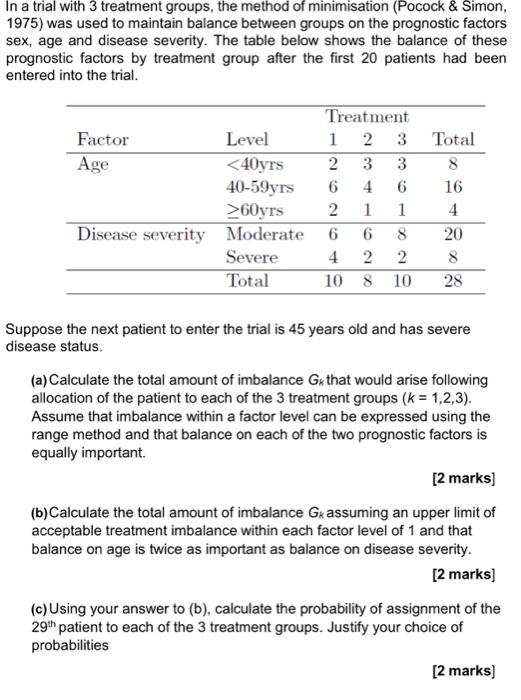Answered step by step
Verified Expert Solution
Question
1 Approved Answer
In a trial with 3 treatment groups, the method of minimisation (Pocock & Simon, 1975) was used to maintain balance between groups on the

In a trial with 3 treatment groups, the method of minimisation (Pocock & Simon, 1975) was used to maintain balance between groups on the prognostic factors sex, age and disease severity. The table below shows the balance of these prognostic factors by treatment group after the first 20 patients had been entered into the trial. Level 60yrs Disease severity Moderate Severe Total Factor Age Treatment 2 3 1 2 3 3 6 4 6 2 1 1 6 6 8 4 2 2 10 8 10 Total 8 16 4 20 8 28 Suppose the next patient to enter the trial is 45 years old and has severe disease status. (a) Calculate the total amount of imbalance G that would arise following allocation of the patient to each of the 3 treatment groups (k = 1,2,3). Assume that imbalance within a factor level can be expressed using the range method and that balance on each of the two prognostic factors is equally important. [2 marks] (b) Calculate the total amount of imbalance Gx assuming an upper limit of acceptable treatment imbalance within each factor level of 1 and that balance on age is twice as important as balance on disease severity. [2 marks] (c) Using your answer to (b), calculate the probability of assignment of the 29th patient to each of the 3 treatment groups. Justify your choice of probabilities [2 marks]
Step by Step Solution
★★★★★
3.45 Rating (148 Votes )
There are 3 Steps involved in it
Step: 1
To calculate the total amount of imbalance Gk for each treatment group well use the range method which measures the imbalance within a factor level We...
Get Instant Access to Expert-Tailored Solutions
See step-by-step solutions with expert insights and AI powered tools for academic success
Step: 2

Step: 3

Ace Your Homework with AI
Get the answers you need in no time with our AI-driven, step-by-step assistance
Get Started


